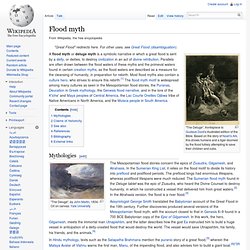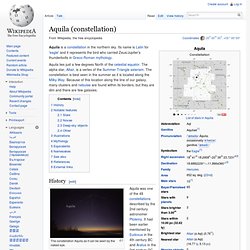

Instagram. Instagram. Instagram. Instagram. Instagram. The Age of Aquarius. Overview[edit]

The Age of Aquarius. Extroversion and introversion. The trait of extraversion–introversion is a central dimension of human personality theories.

The terms introversion and extraversion were first popularized by Carl Jung,[1] Although both the popular understanding and psychological age differ from his original intent. Extraversion tends to be manifested in outgoing, talkative, energetic behavior, whereas introversion is manifested in more reserved and solitary behavior.[2] Virtually all comprehensive models of personality include these concepts in various forms. Examples include the Big Five model, Jung's analytical psychology, Hans Eysenck's three-factor model, Raymond Cattell's 16 personality factors, the Minnesota Multiphasic Personality Inventory, and the Myers–Briggs Type Indicator.
In any case, people fluctuate in their behavior all the time, and even extreme introverts and extroverts do not always act according to their type. Varieties[edit] Extraversion[edit] Introversion[edit] Ambiversion[edit] Measurement[edit] Eysenck's theory[edit] Fixed Sign. In Astrology, Fixed Signs are associated with stabilization, determination, depth and persistence.

They are powerful and willfull in all they do, often achieving much more than the other two qualities. On the other hand, they are also inflexible, rigid, stubborn, opinionated and single-minded. These traits are often paired with the need to be considered "right": they will ruthlessly fight on behalf of their beliefs, regardless of any contrary beliefs. Only during moments of importance or necessity would they consider changing an opinion. Positive sign. These signs constitute the fire and air triplicities.

Aquarius (constellation) (Unicode ♒), a representation of water.

In the Greek tradition, the constellation became represented as simply a single vase from which a stream poured down to Piscis Austrinus. The name in the Hindu zodiac is likewise kumbha "water-pitcher", showing that the zodiac reached India via Greek intermediaries. In the first century CE, Ptolemy's Almagest established the common Western depiction of Aquarius.
His water jar, an asterism itself, consists of Gamma, Pi, Eta, and Zeta Aquarii; it pours water in a stream of more than 20 stars terminating with Fomalhaut, now assigned solely to Piscis Austrinus. The water bearer's head is represented by 5th magnitude 25 Aquarii while his left shoulder is Beta Aquarii; his right shoulder and forearm are represented by Alpha and Gamma Aquarii respectively. The constellation Aquarius as it can be seen by the naked eye. δ Aquarii, also known as Scheat or Skat, is a blue-white A2 spectral class star of magnitude 3.27 and luminosity of 105 L☉. Eridanus (constellation) Eridanus /ɨˈrɪdənəs/ is a constellation.

It is represented as a river; its name is the Ancient Greek name for the Po River. Aquarius (astrology) Flood myth. "The Deluge", frontispiece to Gustave Doré's illustrated edition of the Bible.

Based on the story of Noah's Ark, this shows humans and a tiger doomed by the flood futilely attempting to save their children and cubs. A flood myth or deluge myth is a symbolic narrative in which a great flood is sent by a deity, or deities, to destroy civilization in an act of divine retribution. Aquila (constellation) Aquila is a constellation in the northern sky.

Its name is Latin for 'eagle' and it represents the bird who carried Zeus/Jupiter's thunderbolts in Greco-Roman mythology. The constellation Aquila as it can be seen by the naked eye. The Greek Aquila is probably based on the Babylonian constellation of the Eagle (MUL.A.MUSHEN), which is located in the same area as the Greek constellation.[4] Aquila, which lies in the Milky Way, contains many rich starfields and has been the location of many novae.[1] α Aql (Altair) is the brightest star in this constellation and one of the closest naked-eye stars to Earth at a distance of 17 light-years. Two major novae have been observed in Aquila: the first one was in 389 BC and was recorded as being as bright as Venus; the other (Nova Aquilae 1918) briefly shone brighter than Altair, the brightest star in Aquila. Three interesting planetary nebulae lie in Aquila: More deep-sky objects: There were several different Polynesian equivalents to Aquila as a whole.
Ganymede (mythology) Roman-era relief depicting the eagle, Ganymede wearing his Phrygian cap, and a third figure, possibly his grieving father Ganymede pouring Zeus a libation (Attic red-figure calyx krater by the Eucharides Painter, c. 490-480 BCE) Plato accounts for the pederastic aspect of the myth by attributing its origin to Crete, where the social custom of paiderastía was supposed to have originated (see "Cretan pederasty").[9] He has Socrates deny that Ganymede was the "catamite" of Zeus, and say the god loved him non-sexually for his psychē, "mind" or "soul," giving the etymology of his name as ganu-, "taking pleasure," and mēd-, "mind.

" Ganymede, he points out, was the only one of Zeus's lovers who was granted immortality.[10] Here the Phrygian hunter is borne aloft on tawny wings, Gargara’s range sinks downwards as he rises, and Troy grows dim beneath him; sadly stand his comrades; vainly the hounds weary their throats with barking, pursue his shadow or bay at the clouds.